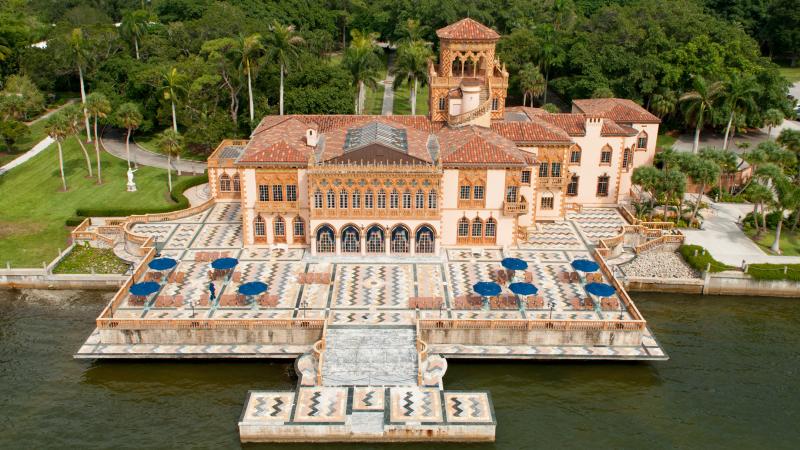Sarasota History In 5 Easy Pieces

The Sarasota area’s unique journey from wild and untamed Gulf coast paradise to sophisticated, cultivated cultural mecca is a colorful one. To really understand its unconventional history, you simply have to experience it for yourself. In the meantime, our handy cheat-sheet to the Sarasota area’s origin story will get you started.
- Sarasota is old, and yes, the conquistadors were the first Europeans to lay claim to the area. In one story, Hernando de Soto dubbed it “ZaraSota,” a not-so-subtle nod to his own name which meant “Radiance of Soto” in full. Other sources contend that the area was named for DeSoto’s daughter Sara, and still others argue that the native peoples had already referred to it as “sara-se-cota,” meaning an easily-observable landfall.
- It’s always been a haven for tourists. Remember the name John Webb; it’s he who built the first winter resort at what is now Historic Spanish Point in the late 19th century. Then came John Hamilton Gillespie, who built the first golf course and a proper hotel on Main Street. Soon, investors, developers and those seeking a winter refuge were flocking to the area, including Bertha Palmer, whose 30,000 acre ranch eventually became Myakka River State Park. Palmer was the area’s first public relations guru, emphasizing its stunning natural beauty and endless opportunities for recreation to her social circle.
- Steeped in circus history? Of course. Sarasota’s most famous resident, John Ringling of Ringling Brothers Barnum & Bailey Circus, was also seeking to build a winter residence in the 1920s. John and his wife Mable realized their vision of a Venetian-style mansion set on Sarasota Bay, and today this glorious—as well as eccentric—home is fully restored and a must-see when you’re in the area. But Ringling’s influence didn’t stop there. The couple also built what would ultimately become The John & Mable Ringling Museum of Art to contain their considerable art collection. And Ringling quickly made Sarasota the circus’s winter home, which gave the area yet another enticing attraction and helped establish its unique character.
- It’s the heart of Florida’s Cultural Coast, and we can thank the Ringlings for that, too. In the 1920s, as infrastructure efforts were flourishing and the influx of tourists and winter residents led the Ringlings to definitively establish Sarasota as a circus town, the door was opened to various other arts institutions and programs. Many of these have been around for decades, including Sarasota Opera, Sarasota Ballet, Sarasota Orchestra and The Circus Arts Conservatory. The area is also teeming with independent theater troupes and stages, art centers and dance organizations, as well as a comedy club, a film society and much more. It was in the 1960s that the Sarasota School of Architecture, a modern approach to home design unique to the area, rose to national prominence, spearheaded by internationally-respected architects like Paul Rudolph. These models of mid century architecture are still a part of the Sarasota landscape today.
- The beaches are rich with history, too. Longboat Key spent the turn-of-the-century as a spot for farming, until Ringling decided to develop it with plans for a grand hotel. Today, it is a gorgeously-cultivated retreat. Ringling characterized Lido Key, too, developing a casino there around which much of the area’s social scene revolved. And before it gained worldwide recognition for its unusually cool, white sand, Siesta Key beach was an uninhabited land full of scrub and mosquitoes. In the 1950s, it supported its own kind of artist colony. And in the 1980s, science indisputably proved that Siesta’s sand is the “whitest and finest” in the world.
